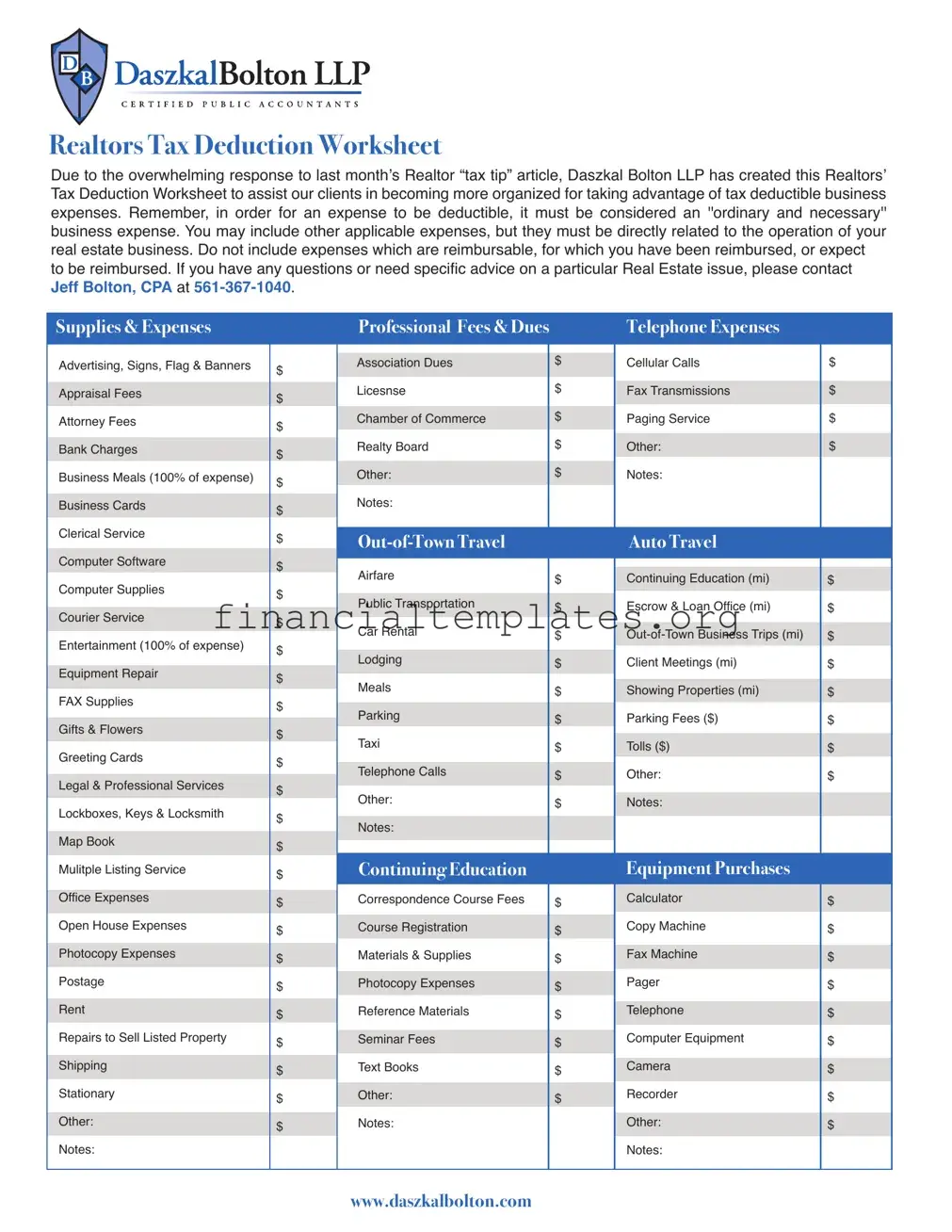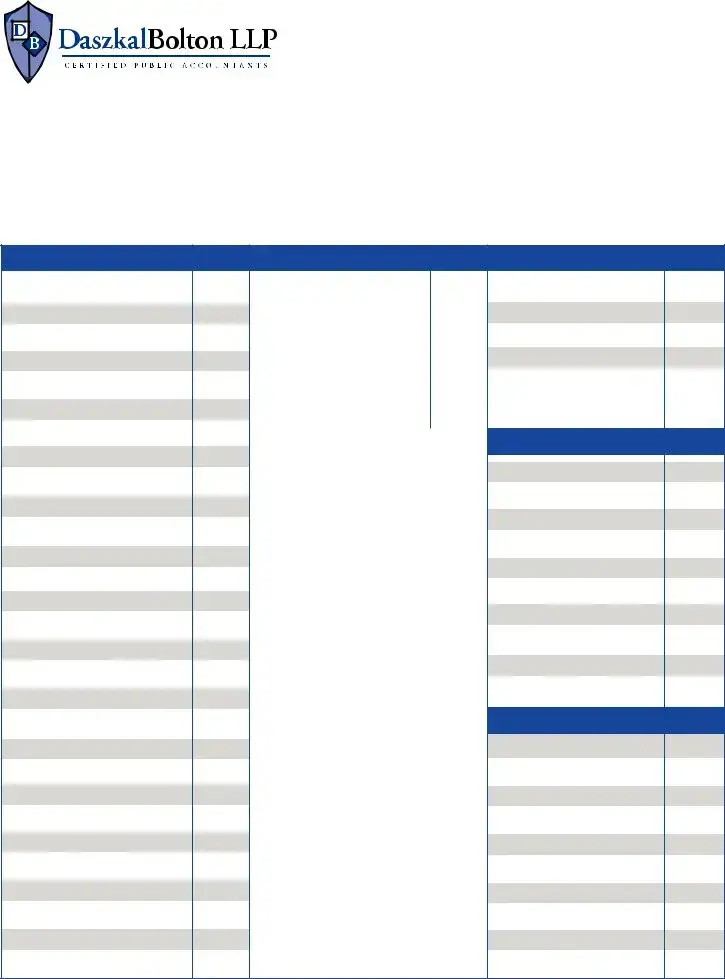The Home Office Deduction form is similar to the Real Estate Tax Deduction form as it assists individuals in organizing expenses that can be deducted for tax purposes. Like the Real Estate Tax Deduction form, which outlines specific expenses related to conducting real estate business, the Home Office Deduction form focuses on expenses incurred from maintaining a home office. These expenses include home-related costs apportioned to the dedicated office space, such as rent, utilities, and repairs, showing a close parallel in purpose and detailed categorization of deductible expenses.
Similarly, the Vehicle Expense log is akin to the Real Estate Tax Deduction form, which encompasses auto travel and its associated expenditures. The Vehicle Expense log is specifically designed to track costs related to the use of a car for business purposes, including mileage, gas, maintenance, and tolls. This reflects the Auto Travel section on the Real Estate Tax Deduction form, aiming to help individuals accurately document and claim work-related vehicle expenses for tax deductions.
The Employee Business Expense Worksheet also bears resemblance to the Real Estate Tax Deduction form. It's designed for employees to itemize and track various work-related expenses that are not reimbursed by their employer. Similar to sections of the Real Estate Tax Deduction form that include business meals, travel, and supplies, the Employee Business Expense Worksheet provides a structured format for reporting necessary costs incurred in the course of performing job duties, reinforcing the notion of organizing deductible business expenses.
The Charitable Donations Tracking form, while focused on charitable contributions, shares a common goal with the Real Estate Tax Deduction form: maximizing tax deductions. The Charitable Donations form helps individuals document their donations to eligible organizations, similar to how the Real Estate form organizes business expenses. Though the nature of deductions differ—one for business expenses and the other for charitable contributions—they both serve the purpose of ensuring individuals accurately report and maximize their tax deductions.
The Schedule C Profit and Loss from Business form is closely related to the Realtors’ Tax Deduction Worksheet, as both are pivotal for individuals who are self-employed or own a business. The Schedule C form is used to report the income and expenses related to the operation of a business, paralleling the Real Estate form’s focus on organizing deductible business expenses. Both forms are essential tools for entrepreneurs to detail their operational costs and potential deductions.
Last, the Investment Interest Expense form is analogous to the Real Estate Tax Deduction form in its documentation of expenses for tax deduction purposes. This form is aimed at investors, allowing them to deduct interest paid on loans used to buy investment property. Similar to real estate professionals tracking their business-related expenses, investors use this form to reduce taxable income through interest deductions, highlighting their mutual objective of tax efficiency.

